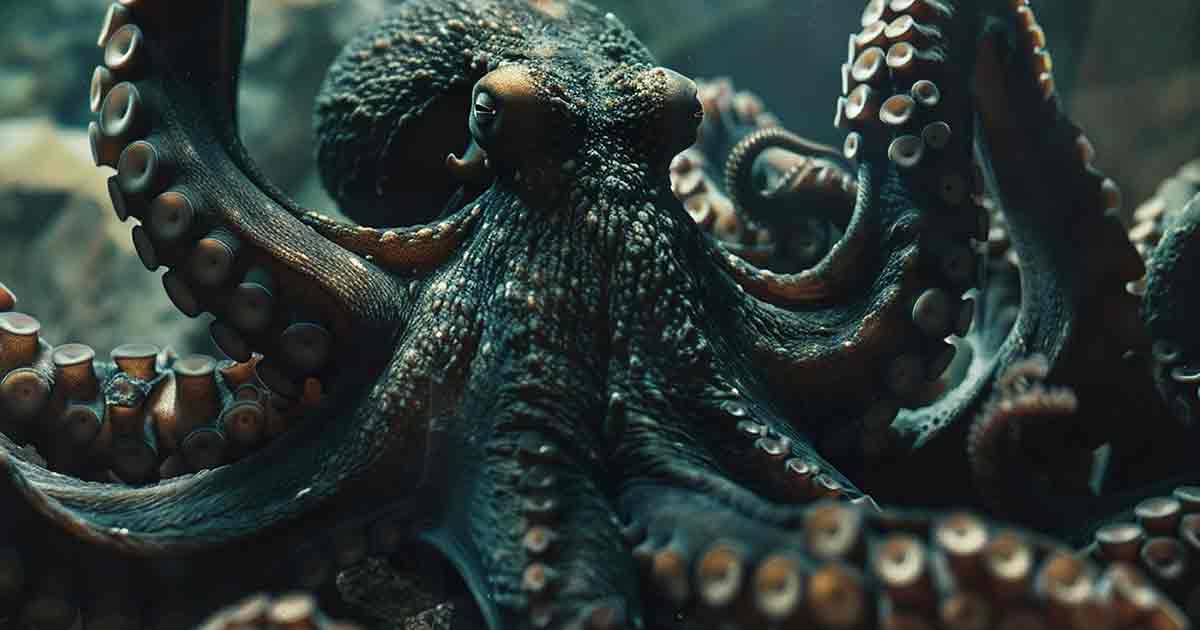Before the Era of Dinosaurs, There Was a Ten-Legged Octopus
Locked away in a drawer in a museum in Canada, scientists rediscovered a fossil that rewrote the paleontological history of the octopus, revealing its earliest known ancestor. To their surprise, not only did this sea creature exist about 330 million years ago—before the era of the dinosaurs—but it also had ten legs!
Rewriting the Evolution of the Octopus
In a groundbreaking study published in the journal Nature Communications in 2022, researchers detailed the discovery of the new species of vampyropod which pushed back the age of the oldest known ancestor of octopuses by 82 million years. This means that they existed before the dinosaurs who roamed the earth from about 252 to 66 million years ago.
Discovered in the Bear Gulch limstone formation in Montana, USA, an area which was once a marine bay and is renowned for its exceptional preservation of fossils from the Carboniferous period, this bizarre find has reshaped our understanding of cephalopod evolution.
After the discovery, the fossil was donated to the Royal Ontario Museum in Canada in 1988, where it remained overlooked for decades until Christopher Whalen, a paleontologist from the American Museum of Natural History in New York recognized its significance. The remarkably well-preserved specimen has served to offer tantalizing clues about their ancient behavior and ecology.
- The Legendary Kraken: The Real Animal Behind the Monster
- Are Fossils Linked to the Legendary Kraken Enough to Prove its Terrifying Existence?

The fossilized remains of Syllipsimopodi bideni, the ten-legged ancestor of the modern octopus. (Whalen et. al. / CC BY 4.0 DEED)
The Unique Morphology of the Ancient Ten-Legged Octopus
The fossil, measuring 4.7 inches (12 centimeters) in length, was found to possess ten limbs—two more than modern octopi—each adorned with two rows of suckers. This unique morphology hinted at the early diversity of cephalopods and provided valuable insights into their evolutionary history.
Further analysis of the ancient fossil revealed evidence of an ink sac. A feature shared by modern octopui is the ability to form distractions by squirting out the dark liquid, suggesting that this ancient cephalopod employed similar defensive strategies to evade predators.This remarkable adaptation underscores the enduring success of cephalopods in adapting to diverse marine environments throughout Earth's history.
The scientists named the prehistoric sea creature—Syllipsimopodi bideni—after President Joe Biden in honor of his plans to fund scientific research. Described as the “missing piece of the puzzle” in the long history of the vampyropod, the ancestor of both the vampire squid and modern octopus, Syllipsimopodi bideni is a pivotal discovery in the field of paleontology.
As scientists continue to unravel the mysteries of Earth's ancient past, the story of the ten-legged octopus ancestor serves as a testament to the resilience and adaptability of life in the ever-changing landscapes of our planet.
Top image: Representational image of an ancient octopus. Source: Ariestia / Adobe Stock

















